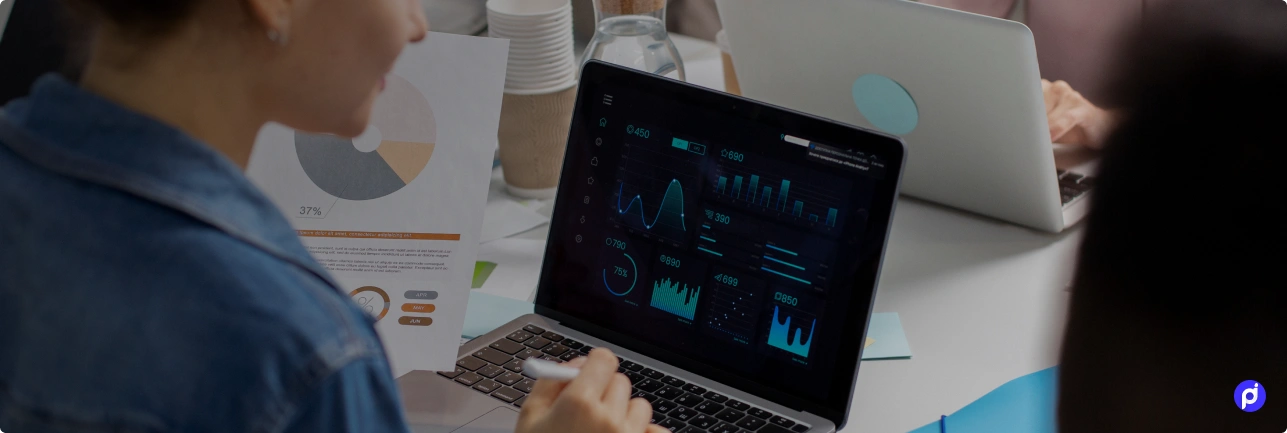Automation is a thing that is always demanded in every industry. In the manufacturing industry, automation is a thing that has brought excellence and enhanced production procedures. Generative AI, a new term, has brought an industrial revolution in manufacturing making manufacturers enjoy a peaceful sleep while their factory is on. You should give thanks to the efforts of a manufacturing application development company. Generative AI will help you to create a wonderful factory by transforming your existing manufacturing application.
Ways Generative AI is Enhancing Manufacturing Applications
1. Enhancing Product Design and Development
With generative AI manufacturers can get innovative designs because it helps a manufacturing application development company make their clients get AI-driven tools that can evaluate huge data minimize material wastage and reduce production expenses. There are AI-driven tools that when used can accelerate the prototyping phase, reduce time-to-market, and enhance product quality.
2. Optimizing Production Processes
Every manufacturer needs to optimize production workflows and generative AI can help in such endeavors. When you are stuck with excessive bottlenecks in your manufacturing, generative AI will be your best friend. It will analyze production data to identify bottlenecks, predict equipment failures, and suggest process improvements enabling manufacturers to achieve higher efficiency, reduce downtime, and lower operational costs.
3. Improving Quality Control
Quality assurance is a critical aspect of manufacturing, and generative AI enhances this by detecting defects and anomalies in real time. AI-powered inspection systems can analyze product images and sensor data to identify imperfections that may be missed by human inspectors. Manufacturing Application Development Companies develop these AI-driven quality control systems, ensuring that manufacturers maintain high standards and reduce the rate of defective products reaching the market.
4. Facilitating Predictive Maintenance
Generative AI enables predictive maintenance by analyzing equipment data to forecast potential failures before they occur. This proactive approach allows manufacturers to schedule maintenance activities without disrupting production schedules. Manufacturing Application Development Companies design AI solutions that monitor machinery health, predict maintenance needs, and extend equipment lifespan, thereby enhancing overall productivity.
5. Enabling Supply Chain Optimization
Supply chain management benefits significantly from generative AI through improved demand forecasting, inventory management, and logistics planning. AI models can predict market trends, optimize stock levels, and streamline distribution networks. Manufacturing Application Development Companies integrate these AI capabilities into supply chain systems, allowing manufacturers to respond swiftly to market changes and reduce operational costs.
Challenges and Considerations
While the benefits of generative AI in manufacturing are substantial, challenges such as data quality, integration complexity, and the need for skilled personnel must be addressed. Manufacturing Application Development Companies must ensure that AI systems are trained on accurate data and are seamlessly integrated into existing workflows. Additionally, ongoing staff training is essential to effectively utilize AI tools and adapt to the evolving technological landscape.
So, what should be the Final Answer?
If you can use generative AI properly, you will feel much more interested in expanding your factory. Generative AI has a strong impact on manufacturing. It can optimize processes, improve quality control, facilitate predictive maintenance, and enable supply chain optimization. Manufacturing Application Development Companies have experts who will encourage you to adopt the change and if you can adopt the change, you can create a beautiful tomorrow for yourself.
Let us study the FAQ’s.
Here are five FAQs based on the blog you provided:
FAQ 1. What is Generative AI and how does it impact the manufacturing industry?
Answer:
Generative AI refers to the use of advanced algorithms that can analyze large datasets to generate optimal solutions. In the manufacturing industry, it plays a crucial role in enhancing product design, optimizing production processes, improving quality control, facilitating predictive maintenance, and enabling supply chain optimization. By integrating generative AI, manufacturers can improve efficiency, reduce costs, and foster innovation.
FAQ 2. How can Generative AI improve product design and development in manufacturing?
Answer:
Generative AI helps create innovative product designs by analyzing vast datasets and generating optimal solutions. It allows manufacturers to develop products that meet specific requirements while minimizing material usage and reducing production costs. AI-driven design tools accelerate prototyping, reduce time-to-market, and enhance product quality.
FAQ 3. What role do Manufacturing Application Development Companies play in implementing Generative AI?
Answer:
Manufacturing Application Development Companies are key to integrating generative AI technologies into manufacturing processes. They design and implement AI solutions that optimize production workflows, improve quality control, enable predictive maintenance, and enhance supply chain management. These companies ensure that AI tools are tailored to the unique needs of manufacturers and seamlessly integrated into existing systems.
FAQ 4. How does Generative AI help with predictive maintenance in manufacturing?
Answer:
Generative AI enables predictive maintenance by analyzing equipment data to predict potential failures before they occur. This proactive approach allows manufacturers to schedule maintenance activities at the right time, preventing unplanned downtime and extending the lifespan of machinery. AI-driven systems monitor the health of equipment, ensuring higher productivity and fewer disruptions to production.
FAQ 5. What are the challenges of implementing Generative AI in manufacturing?
Answer:
While generative AI offers substantial benefits, there are challenges to overcome, including data quality, integration complexity, and the need for skilled personnel. Manufacturing Application Development Companies must ensure that AI systems are trained on accurate, high-quality data and are smoothly integrated into existing workflows. Additionally, ongoing staff training is essential to effectively use AI tools and adapt to the rapidly evolving technology landscape.















